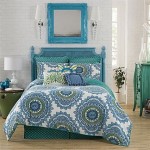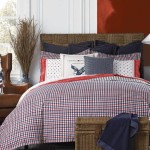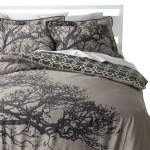Essential Aspects of Bedding Construction Terminology
Understanding the intricate details of bedding construction is crucial for making informed decisions when selecting the perfect sleep ensemble. The construction of a bed comprises various components, each contributing to its overall comfort, durability, and performance. This guide explores the essential aspects of bedding construction terminology to empower you with the knowledge necessary to create a restful and rejuvenating sleep sanctuary.
Mattress Core: The Foundation of Support
The mattress core serves as the backbone of the bed, providing the primary support for the sleeper's body. Core types include:
- Innerspring: Metal coils provide resilience and support, while layers of comfort materials determine plushness.
- Memory Foam: Viscoelastic foam conforms to the body's shape, offering pressure relief and motion isolation.
- Latex: Natural or synthetic latex provides bouncy support and breathability.
- Hybrid: Combines different core materials for a unique blend of support and comfort.
Comfort Layers: Enhancing Plushness and Support
Comfort layers are situated above the mattress core and directly beneath the cover, providing a soft and luxurious feel. Materials used include:
- Memory Foam: Conforming to the body's shape, it cushions pressure points and provides conforming support.
- Latex: Naturally soft and breathable, it adds buoyancy and support while promoting airflow.
- Polyfoam: A synthetic foam available in various densities, providing support and resilience at an affordable cost.
- Gel: Infused into foam or fabric, it offers cooling properties and pressure relief.
Cover: The Finishing Touch
The mattress cover encases the entire ensemble and protects the core and comfort layers from dirt and wear. It also influences the overall aesthetic and feel. Cover materials include:
- Cotton: Natural, breathable, and soft, cotton covers promote airflow and regulate temperature.
- Bamboo: Moisture-wicking and hypoallergenic, bamboo covers create a cool and comfortable sleeping surface.
- Microfiber: Synthetic and plush, microfiber covers offer a luxurious feel and are often treated with antimicrobial properties.
- Knit: Stretchy and conforming, knit covers adapt to the mattress's shape and provide a smooth surface.
Other Bedding Components
In addition to the mattress, other bedding components play a vital role in sleep quality:
- Box Spring: Provides additional support and elevates the mattress, improving airflow.
- Headboard: Attaches to the bed frame to provide protection, support, and decoration.
- Footboard: Complements the headboard, adding style and completing the bed's aesthetic.
- Bed Frame: Supports the mattress and box spring, providing stability and a solid foundation.
Conclusion
Understanding bedding construction terminology empowers you to make educated choices that align with your individual sleep needs and preferences. By considering the mattress core, comfort layers, cover, and other bedding components, you can create a tailored sleep sanctuary that provides optimal comfort, support, and rejuvenation night after night.

Robsons Glossary Of Construction Terms

Bedding Designing Buildings

Edgings Kerbs Concrete Bedded Pavingexpert

Bedding Designing Buildings

Laying Courses And Bedding Materials For Flags Slabs Pavingexpert

Laying Courses And Bedding Materials For Flags Slabs Pavingexpert

Bed Geology Wikipedia
My Textile Notes Count Construction And Width Of Common Hotel Linens

Road And Transport Works Terms Definitions Project Management 123

Course Architecture Wikipedia
Related Posts








